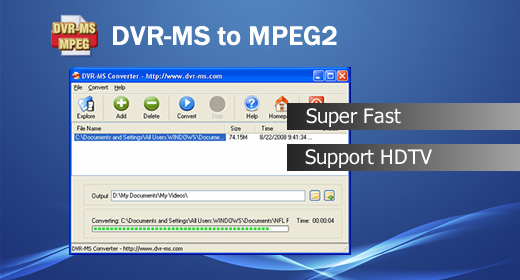Digital television
Digital television (DTV) is the sending and receiving of moving images and sound by discrete (digital) signals, in contrast to the analog signals used by analog TV.
Formats and bandwidth
Digital television supports many different picture formats defined by the combination of size, aspect ratio (height to width ratio) and interlacing. With terrestrial broadcasting in the USA, the range of formats can be coarsely divided into two categories: HDTV and SDTV. It should be noted that these terms by themselves are not very precise, and many subtle intermediate cases exist.
High-definition television (HDTV), one of several different formats that can be transmitted over DTV, uses one of two formats: 1280 × 720 pixels in progressive scan mode (abbreviated 720p) or 1920 × 1080 pixels in interlace mode (1080i). Each of these utilizes a 16:9 aspect ratio. (Some televisions are capable of receiving an HD resolution of 1920 × 1080 at a 60 Hz progressive scan frame rate — known as 1080p60, but this standard is not currently used for transmission.) HDTV cannot be transmitted over current analog channels.
Standard definition TV (SDTV), by comparison, may use one of several different formats taking the form of various aspect ratios depending on the technology used in the country of broadcast. For 4:3 aspect-ratio broadcasts, the 640 × 480 format is used in NTSC countries, while 720 × 576 (rescaled to 768 × 576) is used in PAL countries. For 16:9 broadcasts, the 704 × 480 (rescaled to 848 × 480) format is used in NTSC countries, while 720 × 576 (rescaled to 1024 × 576) is used in PAL countries. However, broadcasters may choose to reduce these resolutions to save bandwidth (e.g., many DVB-T channels in the United Kingdom use a horizontal resolution of 544 or 704 pixels per line). This is done through the use of interlacing, in which the effective vertical resolution is halved to 288 lines.
Limitations
The greatest DTV detail level currently available is 1080i, which is a 1920 × 1080 interlaced widescreen format. Interlacing is done to reduce the image bandwidth to one-half of full-frame quality, which gives better frame update speed for quick-changing scenes such as sports, but at the same time reduces the overall image quality and introduces image flickering and “crawling scanlines” because of the alternating field refresh.
Full-frame progressive-scan 1920 × 1080 (1080p) is part of the ATSC specification, but is rarely if ever used by broadcasters due to the increased bandwidth requirements compared to transmitting 720p/1080i video. High frame-rate 1080p may become an option in the near future, as a result of recent technology advances such as H.264/MPEG-4 AVC video coding, allowing more detail to be sent via the same channel bandwidth allocations that are used now.
The limitations of interlacing can be partially overcome through the use of advanced image processors in the consumer display device, such as the use of Faroudja DCDi and using internal frame buffers to eliminate scanline crawling.
In practice DTV is transmitted non-interlaced as can be demonstrated by the 16×16 pixellated blocks occurring in weak signal areas. If the transmission was interlaced, only the odd or even frames would be corrupted. In order to reduce bandwidth DTV transmits difference information frame to frame, with occasional full frame transmissions. The receiving decoder converts the buffered frames to suit the display device. Typically these will be interlaced but could be non-interlaced such as LCDs. Similarly at the transmitter the interlaced or non interlaced source material will be reformatted and buffered before the non-interlaced difference information is transmitted. Although a method of transmitting interlaced difference data was discussed it was believed too complicated for both transmitter and receiver.
Altogether the number of up and down scalings, convertings and deconvertings means that a well received analogue picture (no ghosting) may be more complete and pleasing to watch than digital. This difference in over all image quality shows up particularly when watching sporting events. As the camera tracks with the subject and the background moves, the result is a time delay in processing. The digital rendering can become increasingly pixellated. The degree of pixellation depends highly on the type of television in use (LCD vs. DLP vs. Plasma vs. LED) and the speed and ability of the television to process images (30 Hz, 60 Hz, 120Hz, 240 Hz).
